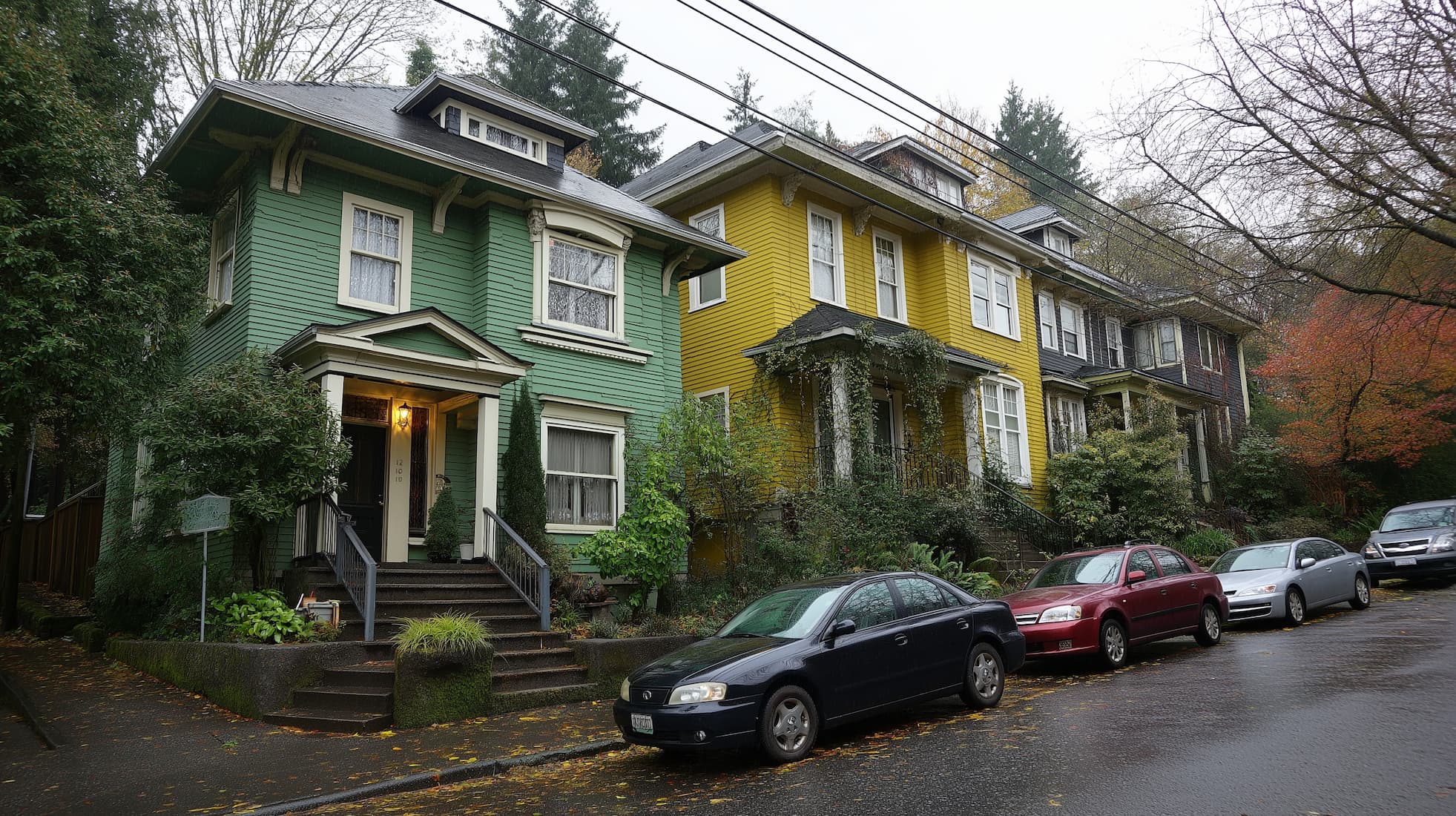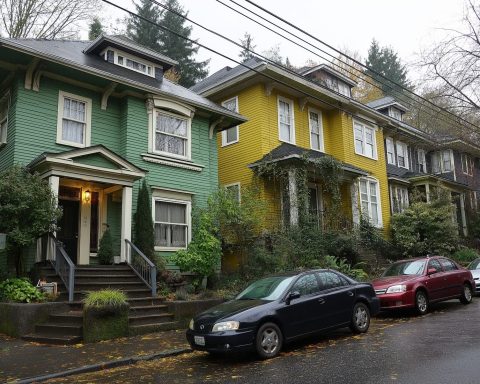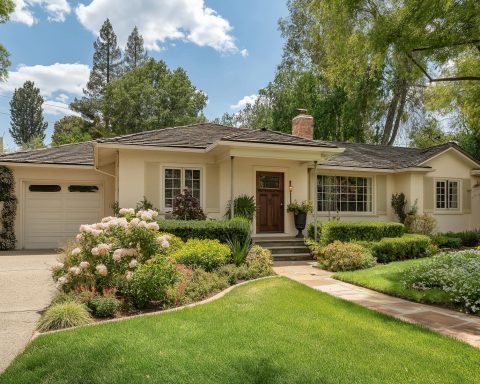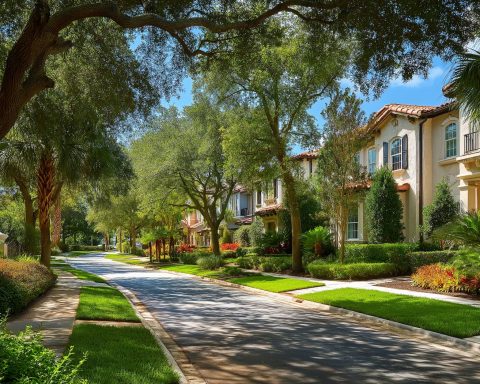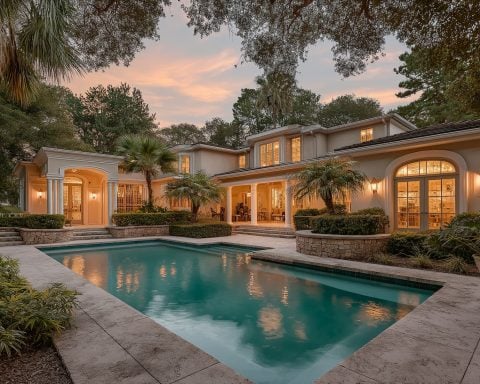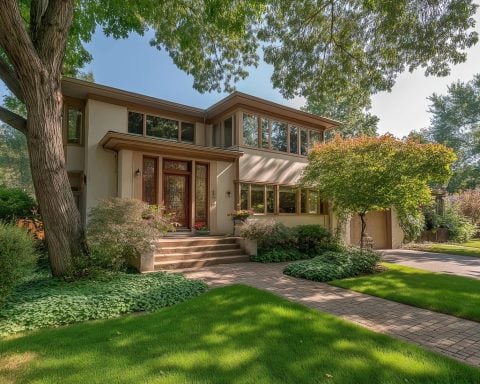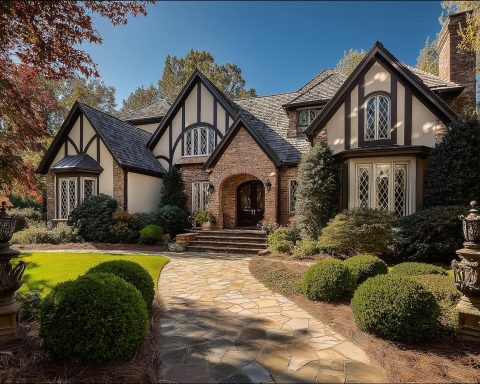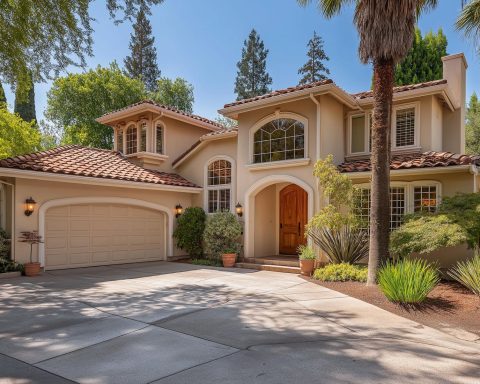Residential Market Trends and Home Prices (2025)
A “Soft Landing” After the Boom: Portland’s housing market is normalizing after the frenetic surge of 2020-2022. Home values skyrocketed over 50% in five years (2020-2024), but 2025 is seeing a much gentler trajectory nwmortgagebroker.com. As of mid-2025, the typical Portland home value is around $537,000, which is actually slightly down about 1% year-over-year zillow.com. In other words, prices have essentially plateaued, marking what experts call a “soft landing” rather than a crash nwmortgagebroker.com. This stabilization is healthy and expected, bringing annual appreciation back to a historically normal ~2-3% rate instead of double digits nwmortgagebroker.com.
Prices and Inventory: The spring 2025 market data shows prices ticking up modestly even as supply improves. In May 2025 the median sale price hit $569,500, up 2% from a year prior portlandrealestate.com. This was a new high for the year, with a jump of $19,500 just from April to May portlandrealestate.com portlandrealestate.com. Meanwhile, listing inventory is rising – about 6,679 active listings in May, up 33% from May 2024 (roughly 3.3 months of supply) portlandrealestate.com. More homes on the market means buyers have more choice, and indeed Portland’s inventory is up a full month compared to a year earlier portlandrealestate.com. However, at just ~3.3 months’ supply, it’s still below the 6-month level of a truly balanced market portlandrealestate.com. In short, sellers’ market conditions persist, but the extreme shortage has eased.
Market Dynamics: Homes are selling quickly but not insanely fast. As of mid-2025, the average Portland listing goes pending in about 16 days zillow.com, and in May the typical market time was 55 days (a week faster than April, but a week slower than May 2024) portlandrealestate.com. Sales volumes have cooled slightly – closed sales in May 2025 were down ~5.7% year-over-year portlandrealestate.com – indicating some buyers remain sidelined by high mortgage rates. Speaking of which, mortgage rates around 7% have dented affordability, causing some would-be buyers to pause nwmortgagebroker.com. But many others have adapted, and competition for desirable homes remains intense: nearly half of sales (46% in June) still close above the asking price zillow.com. The median sale-to-list ratio sits at a perfect 1.00 (100%) zillow.com, meaning on average homes are selling at asking price, with plenty of bidding wars on hot listings. In summary, Portland’s residential market in 2025 is cooler than the 2021 frenzy, but still competitive – a bit more inventory, slightly longer market times, and price growth leveling off to the low-single-digits portlandrealestate.com portlandrealestate.com.
Commercial Real Estate Outlook (Office, Retail, Industrial)
Office Woes and Suburban Shift: Portland’s office sector is grappling with record-high vacancy in 2025. The downtown office vacancy rate leads the nation, hovering around the low-to-mid 20% range watrust.com watrust.com. Remote work remains a major factor – Portland has the highest work-from-home rate on the West Coast at about 21% of employees watrust.com – leaving many downtown towers underutilized. In 2024, dozens of companies (including 23 clients of one commercial bank) decided to relocate out of downtown to suburban locales like Lake Oswego, Beaverton, and Vancouver, WA watrust.com. These suburban office markets have benefited from the migration, seeing lower vacancy and even rising lease rates as companies seek perceived safety and convenience outside the city core watrust.com. In short, downtown offices are a hard sell right now, while suburban business districts are comparatively healthier.
Despite these challenges, there are glimmers of optimism downtown. City and business leaders launched campaigns (“We Believe in Portland”) and safety improvements to revitalize the core watrust.com watrust.com. By summer 2024, downtown foot traffic hit a four-year high with ~2.4 million visitors per month watrust.com – a positive sign that people are coming back for events, dining, and entertainment. The hope is that this momentum, combined with lower rents, will entice some companies and entrepreneurs to return. In fact, some small businesses are taking advantage of cheap downtown leases and high vacancies to launch restaurants and shops, seeing opportunity amid the downturn watrust.com. The outlook for offices remains cautious, but there is a sense that 2025 could mark the bottom of the office slump as more workers return and creative reuse plans materialize.
Retail and Hospitality: Portland’s retail real estate has shown resilience. Retail vacancy is holding around 4% – roughly the same as a year ago, indicating a relatively balanced retail leasing environment kidder.com. Neighborhood retail strips and suburban shopping centers have generally rebounded from pandemic lows, thanks to consumer spending and the return of tourists. In downtown, retail faces the same headwinds as offices (lower foot traffic than pre-2020 and some public safety concerns), but efforts to activate the city – like new public art, concerts, and a thriving dining scene – are drawing people back downtown watrust.com. Notably, Portland’s food and beverage scene remains a strong retail asset, continuing to attract patrons and support occupancy in prime areas.
The hospitality sector (hotels, etc.) is recovering alongside tourism. A high-profile example is the new Ritz-Carlton hotel tower downtown, which opened recently as the city’s first five-star hotel. However, even that project has faced challenges (reports suggest financial struggles early on), highlighting that downtown’s full revival is still a work in progress. Overall, retail and hospitality in 2025 are improving but not fully back to pre-pandemic strength, with the trajectory positive as downtown initiatives take hold.
Industrial and Other Commercial: In contrast to office woes, industrial real estate is a Portland bright spot. Warehouses, distribution centers, and manufacturing space around the metro area are seeing strong demand and low vacancy heading into 2025 watrust.com. E-commerce, logistics, and Portland’s manufacturing base (including high-tech manufacturing in Washington County) keep industrial occupancy high. These conditions are expected to persist, with some industrial tenants even struggling to find space. New industrial developments continue in suburban business parks, though land constraints and high costs temper the pace.
Additionally, Portland’s position as a healthcare hub has kept medical office and life-science real estate stable and solid watrust.com. The metro’s large hospital systems and biotech firms ensure ongoing need for specialized facilities. Multifamily apartment buildings (the “commercial” multifamily sector) are another relative bright spot – more on rentals below, but multifamily investment activity has slowed from 2021 highs due to interest rates, even as vacancies remain moderate.
Adaptive Reuse and Conversions: A key commercial trend is creative reuse of underutilized properties. With so much vacant downtown office space, conversions are being explored – not just to residential (though that’s a possibility for some buildings) but also to new uses like data centers. Portland’s robust power grid and infrastructure could support turning empty offices into data center facilities, an idea being actively discussed by commercial experts watrust.com. There’s also momentum in affordable housing projects repurposing buildings (as the city is directly facilitating – see Projects section below). In sum, Portland’s 2025 commercial landscape is a mixed bag: office sector struggling, retail and hospitality recovering, industrial thriving, and an overarching theme of reinvention as the city adapts its commercial spaces for new purposes.
Rental Market Conditions
Vacancy and Rent Trends: Portland’s rental housing market remains fairly tight in 2025. After a spike in vacancies in 2023 (when many new apartment projects came online simultaneously), the rental market absorbed those units throughout 2024. By spring 2025, the metro-wide apartment vacancy rate had fallen to around 5.9% (down from over 6% a year earlier) katu.com. In some sub-markets, vacancies are even lower – for example, Hillsboro dropped under 5% vacant, and Eugene (to the south) is extremely tight at only ~3.5% vacancy katu.com. The only places with elevated vacancies are in certain unit types: studios in the downtown/NW Portland area have high vacancy (~11% in NW Portland) whereas larger 2- and 3-bedroom units citywide have the lowest vacancy rates katu.com. This reflects renters’ current preferences for more space and the oversupply of micro-units in the urban core.
With vacancies tightening, rent prices have bottomed out and begun rising modestly again. In mid-2024, Portland rents had stagnated or even dipped slightly year-over-year, but by mid-2025 they’ve inched up. As of July 2025, the average asking rent in the city is around $1,798, which is a 2.6% increase from a year prior zillow.com. (For context, the national average rent is about $2,072, so Portland remains more affordable than many big cities zillow.com.) Another dataset shows Portland’s median rent (all sizes) around $1,550 in summer 2025, roughly flat year-over-year apartmentlist.com. Taken together: after a period of flat rents, landlords have regained a bit of pricing power and rents are ticking up ~1-3% annually. Industry experts expect further rent growth ahead given the lower vacancy – likely around 3% per year in 2026-27, according to some forecasts realwealth.com.
Tenant Affordability Squeeze: Despite only modest rent increases recently, affordability remains a serious issue. About 50% of Portland renters are “rent-burdened”, spending over 30% of income on rent wweek.com. And in neighboring cities the figures are even worse (e.g. Gresham 61% rent-burdened) wweek.com. High rents relative to local incomes have been a long-building problem, exacerbated by under-supply of housing. Oregon’s statewide housing shortage pushes people into competition for units, keeping vacancy low and rent burdens high wweek.com. The state has one of the lowest housing vacancy rates in the nation – only about 7 homes per 100 are vacant, 36% below the U.S. average vacancy rate wweek.com. This tightness is especially acute outside Portland in smaller cities, but it’s a statewide pressure that keeps rents from ever falling far wweek.com.
Rental Regulations: Portland and Oregon have taken steps to protect renters. Oregon is one of the few states with statewide rent stabilization – in 2019 it capped rent increases to a formula (7% + inflation). Notably, due to high inflation in 2022, lawmakers adjusted this cap. In 2023, Senate Bill 611 set a hard maximum 10% cap on annual rent increases for most units oregon.gov youtube.com. For 2025, the allowable rent hike is exactly 10.0% (since inflation plus 7% would have been higher) oregon.gov. This law means landlords cannot raise rents more than 10% in a year on existing tenants, adding some predictability for renters (though 10% is still a sizable jump). Additionally, Portland has its own Renter Additional Protections: notably a mandatory relocation assistance payment if a landlord increases rent by 10% or more or issues a no-cause eviction doorloop.com hemlane.com. Landlords must also give 90 days notice for any rent increase portland.gov. These policies aim to prevent sudden large rent hikes and soften the impact on tenants who may be forced to move.
New Supply and Outlook: On the supply side, the Portland area has added many new apartments in recent years – but not enough to fully solve the shortage. A bulge of new construction in 2022-2023 briefly elevated vacancies (as noted), but those units are now largely occupied katu.com. Looking ahead, developers have pulled back on new multifamily projects due to high interest rates, high construction costs, and relatively lower rent growth. There is concern that without faster wage growth in Portland, market-rate rents can’t rise enough to justify expensive new developments katu.com katu.com. In fact, analysts warn that Portland’s sluggish job and income growth (lagging the national average) is keeping rents below the level needed to pencil out new builds, deterring some developers katu.com katu.com. This dynamic – high costs, moderate rents – could slow the pipeline of new housing, which poses a risk of continued tight supply.
For now, the rental market is expected to remain landlord-favorable but stable, with incremental rent increases. Many would-be first-time homebuyers are stuck renting due to mortgage rates, which supports rental demand. Forecasts through 2027 suggest rental vacancy will stay relatively low and rent growth in the low single digits annually realwealth.com. If interest rates ease by 2028, some renters may become buyers, but Portland’s overall housing shortage means rental demand should stay strong. In summary, renters face a challenging market – not as frenzied as a few years ago, but still characterized by limited options, steady rent increases, and strong competition for affordable units.
Neighborhood Trends and Notable Developments
Hottest and Coolest Neighborhoods: Real estate conditions vary widely across Portland’s neighborhoods. In 2024-2025, inner neighborhoods on the east side have seen some of the fastest market activity. Homes sold fastest in areas like Sabin, Buckman, Markham, and Concordia, where listings often garnered multiple offers within days pdxmonthly.com. These neighborhoods combine desirable amenities (parks, walkability, decent schools or close-in convenience) with limited inventory, fueling quick sales. By contrast, a few residential pockets in SW Portland like Crestwood, Ashcreek, and Arnold Creek saw the lowest turnover – homeowners in these areas are largely staying put, resulting in very few listings and a high rate of owner retention pdxmonthly.com. This suggests strong community satisfaction in those enclaves; people aren’t moving out of the quiet, established neighborhoods with larger lots in SW Portland.
Pricing by Area: On the price front, suburban Washington County remains the priciest. The city of Beaverton, for example, commands some of the highest home prices in the metro, thanks to top-rated schools and proximity to major tech employers (like Intel and Nike) nwmortgagebroker.com. Affluent close-in suburbs and Portland’s Westside neighborhoods (think West Hills areas) also stay pricey. Meanwhile, East Multnomah County cities like Gresham offer the most affordable entry point for buyers nwmortgagebroker.com. Gresham’s median prices are significantly lower, and it’s cited as having the greatest appreciation potential going forward due to that affordability gap (more room to rise) nwmortgagebroker.com. Within the city, some condo-heavy urban neighborhoods have softened: for instance, Old Town Chinatown and Sullivan’s Gulch have seen prices for condos and lofts actually decrease or stay low, making them attractive for bargain hunters pdxmonthly.com. Zillow data shows the Pearl District’s typical condo values (~$432k) are well below the city’s overall average zillow.com, reflecting the cool demand for high-density urban living during the pandemic years. This means opportunity for buyers seeking downtown condos, though the recovery of those values will depend on downtown’s resurgence.
Space and Demographics: Some high-end enclaves boast unique stats: Recent home sales in Dunthorpe and Forest Park had the largest homes (by square footage) in the region pdxmonthly.com, underscoring their luxury market status. On the demographic side, certain areas skew older (e.g. Hayden Island, Arlington Heights where over half the residents are 50+ pdxmonthly.com) which can impact housing turnover. Other areas like University Park and Kerns stand out for having the highest rates of bike commuters in the city pdxmonthly.com – a Portland quirk that signals those neighborhoods’ youth and transportation options.
Urban vs. Suburban Shift: A key trend is migration from city proper to suburbs and even across the Columbia River. The Portland metro’s population growth lately has been stronger in suburbs than in the city center nwmortgagebroker.com. The city of Portland saw a slight population decline in recent years, whereas suburbs like Hillsboro, Gresham, and Vancouver, WA have been growing nwmortgagebroker.com. Vancouver, in particular, has lured many Portland-area buyers with its lower housing costs and the perk of no state income tax in Washington nwmortgagebroker.com. This suburban shift, accelerated by remote work and affordability concerns, has buoyed housing markets on the fringe of the metro. For example, Clark County (Vancouver area) and fast-growing suburbs in Clackamas County have tighter housing supply and rising prices, even as Portland city’s market cooled. This indicates a rebalancing of demand geographically: more families and remote workers are choosing suburban space over urban proximity, a trend likely to persist in the coming years.
Neighborhood-Level Developments: On the ground, numerous projects are transforming specific districts. In the Central Eastside, old warehouses continue to turn into creative offices, breweries, and apartments – maintaining it as a hip employment zone. In North Portland, the long-term Albina Vision plan (around lower Albina/Rose Quarter) aims to repair historic displacement with new affordable housing and cultural spaces, though it’s in early stages. The South Waterfront area remains a hotspot for growth – a notable recent project is the Willamette Tower, a new 23-story high-rise that opened in early 2024 with 343 rental apartments, adding a significant influx of housing to South Waterfront’s skyline kgw.com. Additionally, near Providence Park (Goose Hollow), the “Press Blocks – Byline” development topped out in late 2024: it’s a $177 million full-block project including a 24-story tower with 341 apartments plus retail/office space and a public plaza mithun.com mithun.com. Byline will bring much-needed density (and a new public plaza) to the Goose Hollow/Stadium area when it opens in 2025 mithun.com mithun.com. These large projects in the urban core aim to create new 24/7 mixed-use neighborhoods that keep Portland growing up, not just out.
Several signature projects are on the horizon. Perhaps the most transformative is the Broadway Corridor redevelopment in NW Portland’s Pearl District – the huge former USPS mail facility site. Plans are underway to turn this 14-acre site into a new mixed-use neighborhood. The first building approved there is a 14-story, 230-unit affordable housing tower (developed by Home Forward and the Urban League) broadwaycorridorpdx.com portland.gov. It will include family-sized units and even an early childhood education center on site portland.gov portland.gov. Construction is expected to start by 2025-26, and this will be the first of many buildings through 2028 as the Broadway Corridor builds out into a “city within a city.”
Another widely discussed concept is the Portland Diamond Project at Zidell Yards (South Waterfront) – an effort to bring a Major League Baseball stadium and mixed-use development to the riverfront watrust.com. If it comes to fruition, an MLB stadium would be game-changing, anchoring new development and extending the South Waterfront district. As of 2025 it’s still speculative (Portland has no MLB team yet), but city leaders note its transformative potential watrust.com.
All over the metro, transportation and infrastructure improvements continue to shape real estate as well. For instance, TriMet’s expansion of the Red Line and future plans for faster bus corridors improve suburban transit links. And in 2024, Metro Council signaled openness to expanding the Urban Growth Boundary slightly (more on that below), which could lead to entirely new subdivisions at the fringes.
In summary, at the neighborhood level Portland shows a mosaic of trends: some areas red-hot, some cooling; some gaining residents, others seeing out-migration. New developments – from high-rises downtown to subdivisions on the edge – will further re-shape where growth happens. Keeping an eye on these micro-markets is key, because real estate in Portland is truly local – block by block, neighborhood by neighborhood.
New Housing and Commercial Projects to Watch
Portland’s pipeline of new construction and development projects remains active, even amid economic headwinds. Here are some notable projects and recently completed developments that are shaping the market:
- Willamette Tower (South Waterfront): Opened in early 2024, this 23-story apartment high-rise added 343 rental units along Portland’s waterfront kgw.com. It’s one of the tallest residential buildings in the city and brings hundreds of new residents to the growing South Waterfront neighborhood, along with ground-floor retail. Its completion contributed to the temporary vacancy uptick in 2024 (now being absorbed) katu.com, and it underscores the city’s push for high-density housing in urban renewal districts.
- Press Blocks – “Byline” Tower (Goose Hollow): A major mixed-use project adjacent to Providence Park stadium. Byline is the second phase of the Press Blocks redevelopment, featuring a 24-story tower with 341 apartments and a 3-story pavilion with retail, live/work space, and offices mithun.com mithun.com. It includes a public plaza and pedestrian connector that will enhance the Goose Hollow area mithun.com mithun.com. Topping out in late 2024, it is slated to begin leasing in summer 2025 mithun.com. This $177 million project replaces a former newspaper printing plant with a new urban hub mithun.com mithun.com. The scale of Byline demonstrates developers’ confidence that downtown living will rebound, given the right amenities and location.
- Affordable Housing Acquisitions (City Initiative): Rather than building all-new, the Portland Housing Bureau in 2025 undertook an innovative strategy: buying existing private apartment buildings to convert to affordable housing. In spring 2025 the city invested $26 million to acquire three complexes (Goose Hollow Lofts, the Paramount, and the Acqua) totaling 226 units, and will deed-restrict them for low-income households portland.gov. By acquiring relatively new market-rate buildings while the market was soft, the city can bring 226 affordable homes online by summer 2025 – much faster and cheaper than new construction portland.gov portland.gov. Most units will be restricted to renters at 50% of area median income (AMI), and existing tenants can stay or receive relocation assistance portland.gov. This quick action adds desperately needed affordable units across the city. It also hints at market conditions – the fact that these buildings were available for the city to buy suggests some landlords are feeling pressure (possibly from high vacancies or financing costs), creating an opportunity for the public sector to step in portland.gov portland.gov.
- Broadway Corridor Redevelopment (Pearl District): Mentioned earlier, this is a decade-long project to develop the former USPS site. The first building will be a 14-story, 230-unit affordable housing tower with family-sized units and supportive housing, slated to open by 2028 portland.gov portland.gov. Additionally, the broader Broadway Corridor master plan envisions office towers, market-rate housing, parks (extension of the North Park Blocks), and retail over 8+ city blocks. As of 2025, demolition of old facilities is done and infrastructure work (new streets, etc.) is beginning prosperportland.us portland.gov. Four development teams have been shortlisted to propose designs for various parcels broadwaycorridorpdx.com. This is a marquee project that will create an entirely new neighborhood and could deliver over 2,000 housing units (mix of affordable and market) plus significant commercial space through 2030.
- Zidell Yards / “Diamond Project” (South Waterfront): The large brownfield site south of downtown (the former Zidell barge yard) is earmarked for a potential Major League Baseball stadium along with mixed-use development. The Portland Diamond Project has pitched this site for a MLB team and a major new ballpark watrust.com. While Portland doesn’t have a team yet, land has been held for this concept. If realized, it could include not only a stadium but also hotels, offices, housing, and parks – essentially extending the South Waterfront district southward. It remains speculative in 2025, but local officials and investors are actively pursuing the dream of Portland baseball. Even the possibility has an effect: it keeps the Zidell Yards site in play for a large-scale urban project.
- Infrastructure and Transit Projects: In terms of commercial impact, a few infrastructure investments are noteworthy. One is the ongoing I-5 Rose Quarter freeway expansion plan (with caps that could be developed into buildable land reconnecting neighborhoods). While controversial, if it proceeds it will create new cover blocks for future development in inner North Portland. Another is the MAX light rail “Red Line” extension and improvements under construction, improving service to Hillsboro and the airport by 2024-25. And Metro is planning the “TV Highway” high-capacity transit project out to Forest Grove. These transit upgrades often spur transit-oriented development – expect more mid-rise apartments near new stations in coming years.
- Commercial Developments: On the commercial side, Tualatin and Hillsboro continue to see new industrial parks and corporate campuses. Intel’s enormous investment in semiconductor facilities in Hillsboro (and potential CHIPS Act funds) could mean new fabs or expansion there by the late 2020s, which would be a boon to industrial real estate and housing demand nearby. In Portland’s Central Eastside, several older buildings are being converted to creative workspaces or craft manufacturing – keeping that district vibrant. Also, struggling malls like Lloyd Center are being reimagined; Lloyd Center (an iconic urban mall that went into receivership) is slated for a massive overhaul that could add housing, offices, and open space on its 23-acre site. By 2025, plans are still in flux, but any movement there will significantly impact the Lloyd District neighborhood’s trajectory.
In summary, Portland’s development pipeline from now through 2027+ is dynamic: hundreds of new apartments coming in downtown high-rises, major public investments in affordable housing, potential sports-anchored projects, and critical infrastructure upgrades. These projects will inject new supply (especially rental units downtown) and could gradually help offset the housing shortage. They also signal confidence that Portland is still growing. Even as some developers pause in the face of high interest rates, the city’s long-term fundamentals – desirability and need for housing – ensure that key projects are moving forward to shape Portland’s future landscape.
Investment Opportunities and Risks
Opportunities – Undersupply and Innovation: For real estate investors, Portland offers select opportunities in 2025, albeit without the runaway growth of years past. The biggest opportunity is rooted in fundamental undersupply: Oregon has built so little housing relative to demand that any added supply tends to get absorbed quickly wweek.com. This means well-located projects can still perform. For instance, multifamily rentals remain attractive – the apartment vacancy rate ~5% and tight rental supply ensure stable cash flow for landlords katu.com. Investors acquiring or developing apartments in the right submarkets (especially more affordable suburbs or near job centers) can bank on steady tenant demand. In fact, some forecasts predict a “tighter rental market” through 2026 with rents rising ~3% annually realwealth.com, which would bolster rental yields.
One niche opportunity is leveraging Portland’s ADU-friendly policies. The city has nation-leading rules allowing accessory dwelling units (granny flats) and even multiple ADUs on single lots. Homeowners and investors can add units to existing properties to generate rental income. With construction costs stabilizing in 2025, building a backyard cottage or converting a basement could be a smart play for additional cash flow nwmortgagebroker.com. Similarly, Oregon’s new “middle housing” zoning (duplexes, triplexes) opens up formerly single-family lots to small-scale multifamily development. Investors who specialize in these small infill projects – like adding duplexes in Portland’s east side or cottage clusters in nearby towns – may find less competition and support from new state incentives (grants, streamlined permits).
Geographically, outer Portland and close-in suburbs present growth potential. Places like Gresham (as noted) have lower entry prices and are poised for appreciation as the population grows nwmortgagebroker.com. Vancouver, WA is another opportunity zone – it’s drawing Portlanders for tax reasons and affordability, and its housing market could see continued upward pressure. Moreover, the single-family rental (SFR) market in Portland’s suburbs might flourish; as many families can’t afford to buy at high interest rates, they seek detached homes to rent. Investors in SFRs could see both rent growth and long-term appreciation in family-friendly areas.
In the commercial realm, industrial properties are a promising sector. Warehouse and logistics space is in short supply and high demand watrust.com. If an investor can acquire or develop light industrial buildings (perhaps repurposing an older property), the tenant market is strong – driven by e-commerce distribution, manufacturing, and Oregon’s growing cannabis production industry. Cap rates for industrial may compress further given its performance.
Interestingly, some contrarian opportunities exist: downtown commercial properties are distressed, which might allow bold investors to acquire at a deep discount. For example, older office buildings could be bought for cents on the dollar and later converted to apartments or alternative uses. With city and federal support (in the form of grants or tax credits for conversions) being discussed, an investor with patience might turn a vacant office tower into a profitable residential or mixed-use asset in 5-10 years. As one bank executive noted, some underutilized downtown buildings have potential for data centers or other creative uses given Portland’s infrastructure watrust.com. Those who get in now at the bottom of the office market may reap rewards if/when downtown revitalizes.
Risks – Interest Rates and Policy: Despite opportunities, there are significant risks to weigh. High interest rates are the foremost challenge in 2025. Borrowing costs around 7% make financing deals tough – cash flows that worked at 4% mortgages do not pencil at today’s rates. This is causing many investors to hold off on purchases or development. If rates stay elevated for several more years (and many experts think rates will remain in the 6-7% range through 2027 realwealth.com), real estate values could stay flat or even dip in real terms. Only by 2028 might rates potentially fall back to ~5-6% realwealth.com. Investors need to underwrite conservatively for this high-rate environment.
Legislative and Regulatory Risks are also notable in Portland. The state’s tenant-friendly laws – while socially driven – mean landlords face strict rent caps (max 10% increase) and costly relocation fees if they need to remove a tenant oregon.gov doorloop.com. This can pinch profit potential, especially in high-inflation scenarios where expenses rise faster than the capped rent. Additionally, Portland has pondered further regulations (such as stricter screening criteria rules, security deposit limits, or even proposals to ban AI in rent pricing katu.com). Investors must stay abreast of local ordinances that could affect rental operations. On the development side, Oregon’s push for affordability comes with strings – for example, if the Urban Growth Boundary expands (see below), at least 30% of homes on that land must be affordable oregoncapitalchronicle.com, potentially limiting profitability on those projects. Complexity in permitting and design review in the city of Portland is also a risk; though the state is trying to streamline processes, local red tape can cause costly delays.
Market Softness and Economic Factors: Portland’s economic growth has been moderate lately, trailing some peer cities in job and wage gains katu.com. The metro’s tech sector is solid but not booming like Seattle or Austin. Slower wage growth inhibits housing price growth – a double-edged sword. It keeps housing somewhat more affordable, but it also means property values might not rise as fast as investors hope. Portland’s population growth has also slowed considerably; in fact, the city proper lost population in 2020-2022. While projections still show growth (~10% population increase in Oregon by 2030) medium.com, if Portland’s migration trends don’t improve, demand could underperform expectations. In extreme terms, some fear a urban stagnation scenario – but most likely, the region will grow albeit modestly.
Another risk: public safety and perception issues. Portland got national attention in 2020-2021 for protests, and more recently for homelessness and crime concerns downtown. While efforts are underway to address these, the city’s reputation took a hit, which could drag on residential and retail demand if not reversed. Real estate investors have certainly been paying attention – some cite these issues as reasons to favor suburban investments over central city ones until conditions improve. The city and county are investing in homeless services and revitalization, but it’s an ongoing challenge that introduces uncertainty for property owners in the hardest-hit areas.
Lastly, climate and environmental factors can’t be ignored. Oregon’s land use regulations (like the UGB) aim to prevent sprawl and preserve nature – beneficial in the long run, but limiting land supply (hence keeping prices high). Climate resilience is also relevant: Portland’s wildfire seasons and smoke, as well as the risk of a Cascadia earthquake, are the sort of low-probability, high-impact risks that lurk in the background of any Pacific Northwest investment. They haven’t materially affected market pricing yet, but smart investors consider insurance costs and mitigation for such scenarios.
In essence, investing in Portland real estate in 2025 requires balancing solid fundamentals against present risks. The chronic housing shortage and desirable lifestyle bode well for long-term value – Portland will need hundreds of thousands more homes by 2030. But short-term, high financing costs and progressive regulations can squeeze returns. The most successful investors are focusing on niches with upside (e.g. adding units to existing properties, or buying when others are fearful) and have a longer-term horizon to ride out the current flat market phase. Caution and due diligence are key: Portland’s market isn’t the quick flip, breakneck growth story it was a few years ago – it’s now more of a patient, steady play that rewards those who solve its housing puzzle within the evolving rules.
Policy Changes and Zoning Updates
Middle Housing and Zoning Reform: Oregon and Portland have been at the forefront of pro-housing zoning reform, and 2025 brings further implementation of these changes. A major shift was House Bill 2001 (passed in 2019) which effectively ended exclusive single-family zoning in large cities. Portland integrated this with its Residential Infill Project, now allowing up to 4 units on most residential lots. Building duplexes, triplexes, fourplexes – or a house + 2 ADUs – is now legal on land where only one home stood before. By 2025, these “missing middle” homes are slowly appearing, adding gentle density in neighborhoods. In mid-2025, Governor Tina Kotek signed new laws to supercharge middle housing construction oregoncapitalchronicle.com oregoncapitalchronicle.com. For example, House Bill 2138 (2025) explicitly prevents local governments from blocking duplexes and triplexes on lands zoned single-family (closing any loopholes from the 2019 law) oregoncapitalchronicle.com. This extends the spirit of HB2001 to every corner of the state, ensuring smaller cities must also accept duplexes/triplexes by-right oregoncapitalchronicle.com. The goal is to spur a wave of townhomes, cottage clusters, and multiplexes to fill the “missing middle” need.
Streamlining and Incentives: Another 2025 law, HB 2258, grants the state more power to streamline development approvals oregoncapitalchronicle.com. It allows the state’s Land Conservation and Development Commission to pre-approve standard housing plans and set clear, objective design standards that developers can use for quicker permitting oregoncapitalchronicle.com. Essentially, it tries to cut red tape by offering pre-approved building templates and limiting subjective design reviews that often delay projects. This is coupled with new funding: HB 3031 provides grants to cities for critical infrastructure (like roads and sewers) to support new housing development oregoncapitalchronicle.com. Meanwhile, SB 684 creates a state-backed low-interest loan fund for mixed-income housing projects, to help developers overcome high financing costs for affordable units oregoncapitalchronicle.com. And HB 3145 allocates $25 million to boost modular and prefab housing factories, aiming to lower construction costs statewide oregoncapitalchronicle.com.
All these measures are part of a broad recognition: Oregon needs a lot more housing, fast. The state’s own analysis determined we need to add about 30,000 homes per year for the next decade to catch up with demand, mainly in the Portland metro and Willamette Valley oregoncapitalchronicle.com. That is more than double the current production rate. Gov. Kotek’s ambitious goal is 36,000 new homes per year oregoncapitalchronicle.com, and she’s created a “Housing Production Advisory Council” and even a new Housing Accountability and Production Office to hold local jurisdictions accountable oregoncapitalchronicle.com. Starting in 2025, cities must produce housing production strategies and meet targets – or face pressure from the state’s enforcement arm. Portland itself has embraced these goals; the City Council has been updating its comprehensive plan to enable more growth in centers and corridors, and speeding approval of apartment projects (for example, via a planned “design excellence” code update to simplify design review for taller buildings).
Urban Growth Boundary (UGB) Adjustments: One of the most notable policy shifts came in 2024 at the state legislature. Historically, Portland’s Urban Growth Boundary tightly limited expansion onto farmland. But to alleviate the housing crunch, lawmakers passed a housing package that eases UGB expansions under certain conditions. Senate Bill 1537 (2024) allows a one-time addition of up to 300 acres total to the Portland metro UGB (and smaller expansions for other cities) oregoncapitalchronicle.com oregoncapitalchronicle.com. This was a compromise down from an initially proposed 600 acres. To use this, the region must prove need and commit that at least 30% of new homes on that land will be affordable units oregoncapitalchronicle.com. In short, Portland metro can sprawl outward a bit more if it leads to more housing. Metro, the regional government, will be considering UGB expansions likely in 2024-2025 using this allowance oregonmetro.gov. Potential expansion areas might include parts of Washington County and Clackamas County where cities like Hillsboro, Beaverton, Wilsonville or Happy Valley have requested more land. Already in early 2023, Metro did a minor UGB expansion (about 500 acres) for planned communities in Tigard and Beaverton oregonmetro.gov. The new state law could open further expansions. This marks a significant philosophical shift – a recognition that some outward growth is needed alongside infill. Still, the 300-acre limit is modest (roughly enough for perhaps 3,000-5,000 homes), so infill and upzoning remain the primary strategies.
Tenant Protections and Rental Policy: As mentioned, SB 611 in 2023 tightened the rent cap to 10%. Portland also maintains its local renter protection ordinances. In 2024-2025, no major new tenant laws were passed in Portland, but enforcement of existing ones (screening criteria, security deposit rules) continues to evolve. Landlords must navigate these carefully to avoid penalties. One interesting development: Portland considered banning the use of automated algorithms (AI) for setting rental prices, amid concerns it could lead to implicit collusion or discrimination katu.com. That policy was debated in 2024 katu.com, reflecting Portland’s willingness to regulate emerging PropTech practices in favor of renter fairness.
Building Codes and Climate: On the construction side, Portland has advanced sustainability in codes. It was among the first to require solar readiness on new homes and deconstruction (instead of demolition) for older homes. In 2024, the city also began phasing in requirements for new large buildings to be all-electric (no fossil fuel heating) to align with climate goals. These code tweaks influence the cost and approach to development (electric heat pumps, etc., are now standard in new builds).
Overall, 2025’s regulatory landscape strongly emphasizes housing production and affordability. The state and city are aligned in a push to lower barriers: from zoning that legalizes more units, to speeding up approvals, to subsidizing infrastructure and affordable units. For developers and investors, this is a welcome tailwind – there is political will to get projects built. However, the flip side is persistent regulation on the use side (tenant protections, rent caps) which require careful compliance. Portland’s ethos can be summarized as “Yes, build more – but also make sure it benefits everyone.” The balance of these policies will significantly shape how many homes Portland can create by 2030.
Outlook and Forecasts Through 2027 and Beyond
Short-Term (2025-2027): The consensus among experts is that Portland’s housing market will see stability with modest growth in the next few years. After the wild swings of the early 2020s, forecasts point to flat or slowly rising home prices through about 2026. For instance, the National Association of Realtors projects only around 2% annual price gains nationally in 2025 and 2026 realwealth.com, and Portland is likely to mirror this tepid growth. Local Portland-specific forecasts indeed suggest a period of “stabilization rather than dramatic growth or decline.” Some analysts even predict a slight -0.8% price dip by early 2026 for Portland’s median home price nwmortgagebroker.com – essentially a flat line. This would be a gentle correction following the huge run-up, keeping prices aligned with incomes. By 2027, if interest rates have eased and the economy remains solid, home sales activity could pick up again, but price increases would likely remain in the low single digits annually. In other words, no boom on the immediate horizon, but also no sign of a bust given the housing shortage floor under prices.
Interest Rate Trajectory: A key driver for the next five years is mortgage rates. Many housing forecasts assume rates stay elevated (~6.5–7.5%) through 2027 realwealth.com, which would indeed cap price growth and keep some buyers on the sidelines. Sometime around 2028, economists expect rates might dip back toward ~5.5-6% if inflation abates realwealth.com. For Portland, that timeline means housing might feel the pressure until late this decade, with a possible uptick in demand once financing becomes cheaper. In the interim, high rates will maintain downward pressure on prices (adjusted for inflation) and continue boosting the rental market (since renting remains the fallback when buying is unaffordable).
Speaking of rentals, expect rent growth to slightly outpace home price growth in the mid-2020s. With vacancy rates projected to stay low, one analysis sees rent increases accelerating to ~3% a year by 2026-27 realwealth.com. This outpaces likely inflation and wage growth, exacerbating affordability issues but also making rental investments attractive. By 2028 or so, if a lot of new multi-family supply opens (some currently planned projects will complete by then) and if homebuying revives, rent growth could moderate again. But unless there’s a recession that spikes vacancy, significant rent declines seem unlikely.
Population and Demand: Demographic forecasts underline that Portland still has growth potential. The metro area might be slower growing than sunbelt cities, but Oregon’s population is projected to increase over 10% by 2030 medium.com. The Portland region specifically could gain on the order of 300,000 people (and perhaps ~120,000 new households) by 2030 if trends hold planetizen.com. These newcomers – along with pent-up demand from existing residents (like young adults currently living with parents or roommates) – will create steady housing demand. The big question is whether housing production can catch up. Oregon’s plan is to build ~36k homes/year, but as noted, only ~14k were built last year oregoncapitalchronicle.com. If the state’s efforts only marginally increase construction, the supply-demand imbalance will persist, propping up home values and rents. On the other hand, if a building boom truly materializes (a big “if”), it could relieve pressure and keep prices/rents from rising much faster than inflation.
By 2030 – Big Picture: Looking toward the end of the decade, Portland real estate could be in a very different phase. Optimistic scenarios from some analysts imagine that by 2030, the housing shortfall has narrowed, and price growth over 2025-2030 averages a modest ~2-4% annually – basically in line with incomes and inflation. In that case, home prices in 2030 might be roughly 10-20% higher than today in nominal terms. For example, a $550k median in 2025 could be around $620k in 2030 (assuming ~3% yearly growth). This is a far cry from the 50% jump we just saw in the last 5 years, representing a return to normalcy. Some nationwide projections echo this: U.S. home prices are expected to rise at or slightly above inflation, totaling perhaps +10% by 2029 realestate.usnews.com – Portland likely fits that pattern barring a tech boom or bust.
There are, of course, other possible outcomes. If Portland overcomes its challenges and rekindles the appeal it had pre-2020 (vibrant urban culture, strong in-migration), demand could surprise on the upside. Already, there are signs the downtown malaise may be turning a corner with rising foot traffic watrust.com, which could lure talent and employers back, boosting housing. If a major catalyst like an MLB team or a big employer relocation (imagine another Nike-sized HQ) hits Portland, real estate could heat up quickly again. Conversely, if remote work continues to siphon people to cheaper areas and Portland doesn’t effectively address livability issues, growth could underwhelm, and prices might stagnate longer.
Expert Sentiment: Many institutional forecasts see Portland as a stable, long-term bet, not a high-flyer. In PwC’s Emerging Trends in Real Estate 2025 report, Portland likely ranks as a middle-tier market – attractive for its quality of life and innovation, but constrained by growth limits and current struggles (note: while we don’t have the exact PwC rank here, it traditionally places Portland around mid-pack). Local economists emphasize that affordability will be the defining issue: if we fail to add housing, by 2030 homeownership could drift further out of reach for the middle class. Oregon’s state economist bluntly warned that big price increases cannot be sustained for another five years without “dividing” society into haves and have-nots realwealth.com. This urgency is driving the aggressive housing reforms – with the hope that by 2030, Portland’s market will be more balanced.
Bottom Line Forecast: Through 2027, expect moderate, sustainable growth in Portland real estate. The days of double-digit annual gains are likely over (barring an external shock). Instead, think “slow and steady”: low-single-digit appreciation for home values, rent growth a tad higher but not runaway, and relatively flat sales volumes until interest rates ease. Inventory will gradually expand as more projects complete, but unlikely to exceed demand given population needs. By 2030, if policies succeed, Portland could see a more inclusive housing market – perhaps a slightly lower homeownership rate (if renting becomes more common), but also a significant expansion of affordable and middle housing options.
Portland’s long-term fundamentals remain positive: it’s still a desirable metro with educated workforce, scenic environment, and progressive planning. These attract people and businesses. So while the next few years are about consolidation and catching our breath from a wild ride, the outlook to 2030 is cautiously optimistic. As one housing economist put it, we’re “not looking at a boom or bust, but a slow and steady rise” realwealth.com. For those planning to invest or settle in Portland, patience and realism will be key – the market’s not a rollercoaster now, it’s more of a marathon. And with concerted efforts, Portland’s real estate in 2030 can be both robust and more affordable, keeping the city livable and thriving for the next generation.
Sources:
- Portland market data and pricing trends: Portland Real Estate – Matin Team (Market Update June 2025) portlandrealestate.com portlandrealestate.com; Zillow Home Value Index (July 2025) zillow.com; Mortgage Broker Market Analysis (Matt Jolivette) nwmortgagebroker.com nwmortgagebroker.com.
- Commercial real estate insights: Washington Trust Bank/PBJ on Portland CRE 2025 watrust.com watrust.com watrust.com; Kidder Mathews Retail Report (early 2025) kidder.com.
- Rental market statistics: KATU News – Multifamily NW report (April 2025) katu.com katu.com; Zillow Observed Rent Index (July 2025) zillow.com; Willamette Week on housing shortage (Jan 2025) wweek.com wweek.com.
- Neighborhood and demographic info: Portland Monthly Real Estate Guide Spring 2025 pdxmonthly.com pdxmonthly.com; Mortgage broker neighborhood highlights nwmortgagebroker.com; Zillow neighborhood values zillow.com.
- Notable developments and projects: KGW coverage of 2024 projects kgw.com; Mithun press release on Byline/Press Blocks mithun.com mithun.com; Portland Housing Bureau press release (June 2025) portland.gov portland.gov; Prosper Portland Broadway Corridor info broadwaycorridorpdx.com; Portland.gov Broadway Corridor housing details portland.gov; Washington Trust on Zidell Yards/MLB prospect watrust.com.
- Investment and forecasts: RealWealth 2025-2029 Housing Predictions realwealth.com realwealth.com; Oregon Capital Chronicle on housing bills (2024 & 2025) oregoncapitalchronicle.com oregoncapitalchronicle.com; Expert commentary on price sustainability realwealth.com.
